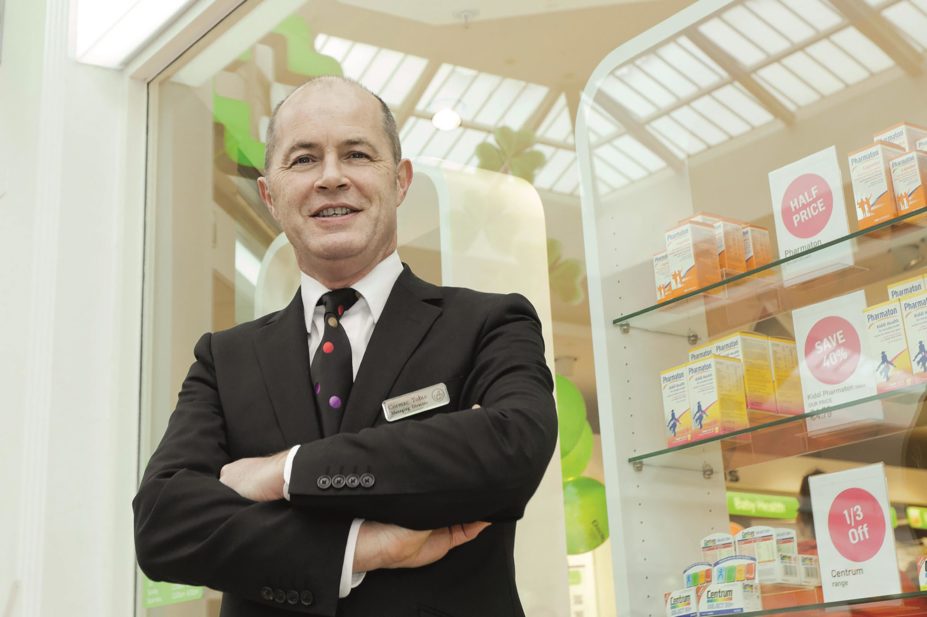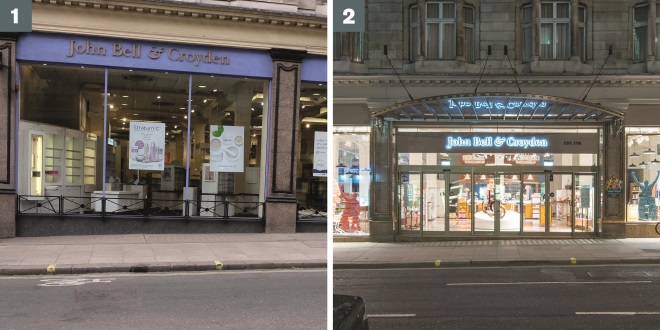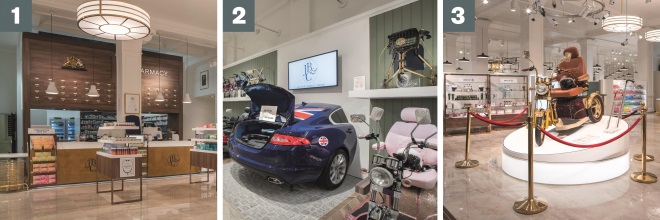
John Bell & Croyden
Cormac Tobin, managing director of Celesio UK, which owns John Bell & Croyden, describes the history of the pharmacy and explains what changes have been made.
What is special about John Bell & Croyden?
The pharmacy was first opened in 1798 by John Bell, whose son, Jacob, went on to found the Royal Pharmaceutical Society of Great Britain in 1842.
We have the Coronation Anointing Oil used during the coronation of Queen Elizabeth II in June 1953. On display is a replica of the original, which is kept under lock and key. We have prescription books from the past 200 years that contain prescriptions that Florence Nightingale used to get. The pharmacy also displays equipment used in pharmacy compounding and pestle and mortars from a couple of hundred years ago.
The pharmacy holds the Royal warrant, which is given to individuals or companies who have supplied goods or services for at least five years to the Queen, Duke of Edinburgh or Prince of Wales, and we want to do justice to that wonderful accolade.
Why did you decide to refurbish the store?
When I joined the company two and a half years ago, I said: “This is a jewel, it needs to be polished again.” The store did not reflect its greatness — its colleagues, products and rich history. I decided it was time to make a real statement in London.
We wanted a new store that would replicate both its tradition and heritage but would support a modern customer’s needs and desires. We also wanted to give an impression of authority and authenticity around health and skin health. We decided to sell only products that give authenticity to the store. Sometimes pharmacies are crowded with products that do not really need to be there, for example, we were previously stocking products you could find in department stores and sometimes even supermarkets. We wanted to stock ranges that customers want but are not widely available, giving them compelling reasons to return to the store.

Courtesy of John Bell & Croyden
The shop front of John Bell & Croyden pharmacy (1) before and (2) after refurbishment
What changes have been made?
We brought the building back to its original beauty and everything inside has been replaced, except all the heritage pieces we wanted to keep, including the traditional roof and all the museum pieces. Everything else was brand new, designed in a way that is modern but harks back to a look and feel of the past.
We put in three clinic rooms, including our First Care clinic where a prescribing pharmacist deals with minor ailments for £35 per consultation. For this clinic, we paid for one of our existing pharmacists to take a prescribing course at Cambridge Clinic and Sanctuary, enabling her to prescribe emergency medicines and treatment for around 30 of the most common ailments. We have five other clinics: chiropody, dental hygienist, skincare treatment, osteopathy and hair replacement.
The patient pays for these private services, which will be operated by small businesses that are charged rent to practise in the pharmacy. They operate to the high standard that we set for them.
There is also a huge area with a range of assisted living products including scooters and toilets. The store is on two slightly different levels, about eight inches apart, so there are ramps throughout the store that blend in with the design. There are accessible toilets that have been added as part of the redesign.

Source: John Bell & Croyden
1. The pharmacy counter at John Bell & Croyden
2. The refurbished pharmacy has many new products to help patients with mobility issues
3. One of the displays in the refurbished pharmacy
What challenges did you face during the redesign?
The main challenge was making sure that patients and customers felt the service level they were getting was consistent. The level of dust during the refurbishment took us all by surprise. We undertook the refurbishment in three phases closing different areas of the store during each phase, which led to a slight disruption as products were being moved across the store, but we brought extra colleagues in and were surprised by how well the store performed during this period. I think we managed customers’ and patients’ expectations and did not let them down, because we did not let our standards drop.
What advice would you give to others trying to achieve similar outcomes?
The first thing, before you do a refit, is to define what you want at the end of it. It is not just about the design itself, it is the products and services you want to provide and the people you want to provide it. Once you have done that, make sure that you do your finances and can pay back anything you borrow. Refits are extremely expensive so you need to say, “I am going to spend this amount of money, but this is the extra increase in sales and margins I am going to get”.
Be careful during the building work not to keep adding things because it will cost you money at the end of the job
The second thing is to price it up and plan it. Do not accept your first quote and be careful during the building work not to keep adding things because it will cost you money at the end of the job.
During the work, reward your customers for staying with you. We gave them loyalty cards with discounts for John Bell & Croyden during that period of time. We also kept them informed of what we were doing and what we wanted to have at the end of it. Additionally, we asked customers for their opinions at the beginning — one suggestion was to have more products to help with mobility, so we did that.
Be brave — go into new areas associated with your skills even if it makes you feel a little uncomfortable. Give people reasons to come to your store because, at the end of it, you will have a destination pharmacy that people will travel to and go by other places in order to come to you.
At the end, reward your colleagues who worked through the refit and celebrate your customers coming back.
How will you judge the success of the changes?
We will review the changes on two levels. One, we will do qualitative market research based on customers in the store, including what they do and do not find appealing and what would they change. Two, our quantitative research will be constant analysis of the sales in each area. If an area is performing, we need to understand how to make sure it continues to do so and, if it is not, is something broken? Does it need to be fixed? If so, fix it. If it continues not to perform, your best bet is to take it out of the store. Although you may be precious and not want to change something, you may have to adapt.


